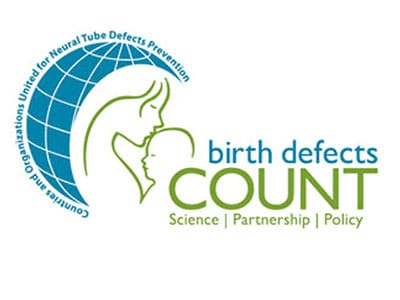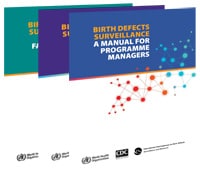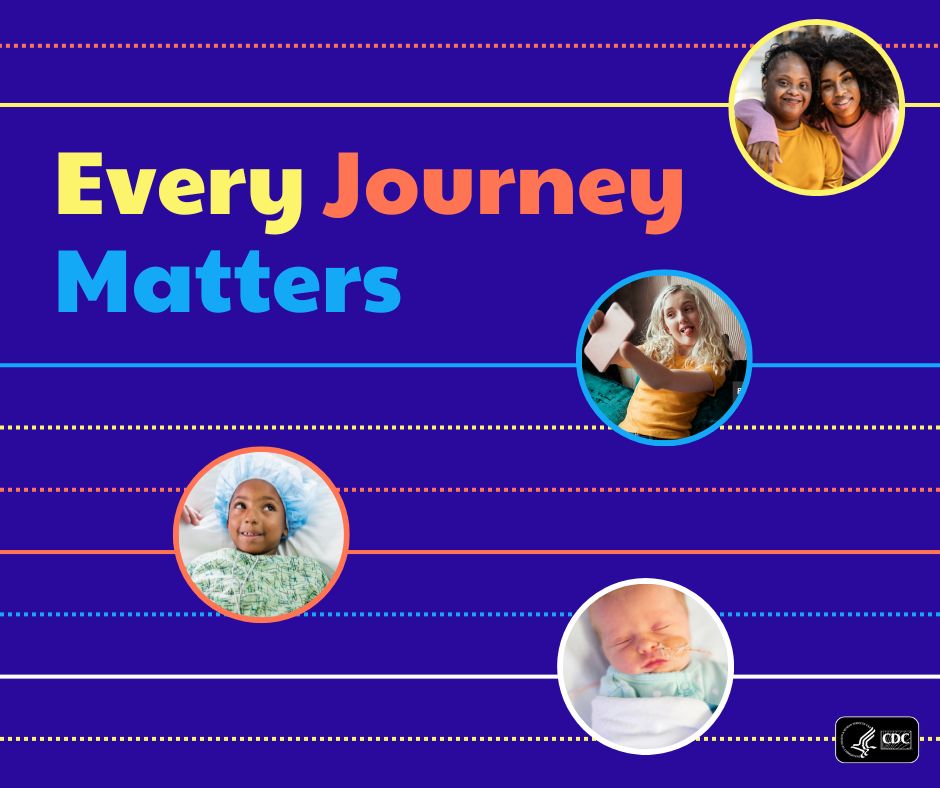Birth Defects Research and Tracking
Accurately tracking birth defects and analyzing the collected data is a first step in preventing birth defects. CDC uses tracking and research to identify causes of birth defects, find opportunities to prevent them, and improve the health of those living with birth defects. Understanding the potential causes of birth defects can lead to recommendations, policies, and services to help prevent them.
Importance of Tracking and Research
- Tracking: Birth defects tracking systems identify babies born with birth defects and collect information to learn more about these conditions. Many states have birth defects tracking systems, which are vital to help us find out where and when birth defects occur and who they affect.
- Research: We base our research on what we learn from tracking. By analyzing the collected data, we can identify factors that increase or decrease the risk of birth defects. In addition, research can help us understand the relationship between birth defects and environmental concerns, or other factors such as taking specific medications before and during pregnancy.
Notable Research Findings

We know what causes some birth defects, such as Down syndrome and fetal alcohol syndrome. However, for many birth defects, the causes are unknown.1 Also, we don’t fully understand how certain factors might work together to cause birth defects. While there is still more work to do, we have learned a lot about birth defects through past research. For example:
- Getting enough folic acid, a B vitamin, at least one month before getting pregnant and during early pregnancy lowers the risk of having a baby with serious birth defects of the brain and spine (neural tube defects). For this reason, all women who can become pregnant should be sure to get 400 micrograms of folic acid every day.
- Drinking alcohol during pregnancy can cause the baby to be born with fetal alcohol spectrum disorders (FASDs). Pregnant women should not drink alcohol any time during pregnancy. Women also should not drink alcohol if they are trying to get pregnant or if they are sexually active and do not use effective birth control.
- Smoking in the month before getting pregnant and throughout pregnancy increases the chance of premature birth, certain birth defects (such as cleft lip, cleft palate, or both), and infant death. Quitting smoking before getting pregnant is best. However, for women who are already pregnant, quitting as early as possible can still help protect against some health problems for the mother and baby.

- Women who are obese when they get pregnant have a higher risk of having a baby with serious birth defects of the brain and spine (neural tube defects), some heart defects, and other birth defects.
- Poor control of diabetes during pregnancy increases the chance for birth defects and might cause serious pregnancy complications. If a woman with diabetes keeps her blood sugar well-controlled before and during pregnancy, she can increase her chance of having a healthy pregnancy and baby.
- Taking certain medications during pregnancy can cause serious birth defects, but the safety of many of the medications taken by pregnant women has been difficult to determine. If you are pregnant or planning a pregnancy, you should not stop taking medications you need or begin taking new medications without first talking with your doctor. This includes prescription and over-the-counter medications and dietary or herbal products.
- Tracking of Birth Defects
- The Metropolitan Atlanta Congenital Defects Program (MACDP)
MACDP is a tracking system for birth defects among children born to residents of certain counties of metropolitan Atlanta. In MACDP, information is gathered about all babies with birth defects who live in the Atlanta area. Established in 1967, MACDP was the nation’s first system for active data collection about birth defects. Active data collection means that committed staff members seek out information about birth defects and continually review medical records at multiple healthcare facilities in a given geographic area. Information obtained from MACDP is used to understand who is affected by birth defects, learn about other health outcomes due to birth defects, and provide data for education and health policy decisions leading to prevention of birth defects. The system also serves as a model to help other programs develop and implement new tracking methods.
Learn more about the Metropolitan Atlanta Congenital Defects Program (MACDP)

- State-Based Tracking Systems
CDC helps to support birth defects tracking systems in 10 states in the United States. The tracking systems look for all babies with birth defects who live in their study area, which is important to understand the impact of birth defects in their population. These funded states and territories use the data to refer infants and children with birth defects to needed services and develop materials and interventions to help prevent birth defects. Identifying birth defects at a state level also strengthens public health officials’ ability to estimate how common these conditions are and evaluate risk factors that are important in their community. State-based birth defects tracking programs provide important insights into our continued efforts to prevent birth defects and support families affected by them.
- The Metropolitan Atlanta Congenital Defects Program (MACDP)
- National Birth Defects Prevention Network (NBDPN)
CDC supports and collaborates with the NBDPN. The NBDPN is a group of over 225 individuals working at the national, state, and local levels, who are involved in tracking, researching, and preventing birth defects. The NBDPN serves as a forum for exchanging ideas about tracking and researching birth defects and for providing technical support for state and local programs. Established in 1997, the NBDPN assesses the effect of birth defects on children, families, and the healthcare system. The network also identifies risk factors for birth defects. This information can be used to develop strategies to prevent birth defects and to assist families and their providers in preventing other disabilities in children with birth defects.
Learn more about the National Birth Defects Prevention Network (NBDPN) -
Centers for Birth Defects Research and Prevention
CDC funds the Centers for Birth Defects Research and Prevention , which collaborate on large studies such as the National Birth Defects Prevention Study (NBDPS; births 1997-2011) and the Birth Defects Study To Evaluate Pregnancy exposures (also called BD-STEPS; began in 2014).These studies, which interview mothers of children with and without birth defects, work to identify risk factors for birth defects.Established in 1997, NBDPS has made key contributions toward understanding the risk of specific medications when used just before and during pregnancy. Data from NBDPS has clearly demonstrated that obesity in the mother is a strong risk factor for a number of major birth defects. NBDPS studies have also confirmed that women who smoke during pregnancy have a higher risk of having a baby with a cleft lip, cleft palate, or both. BD-STEPS builds on the success from NBDPS. It presents an opportunity to further explore NBDPS findings and follow up on leads to better understand what causes birth defects.

The Centers for Birth Defects Research and Prevention, which collaborate on BD-STEPS, are in Arkansas, California, Georgia (CDC), Iowa, Massachusetts, New York, and North Carolina. For the NBDPS, study centers in New Jersey, Texas, and Utah also contributed data and expertise.
Learn more about the Centers for Birth Defects Research and Prevention - National Spina Bifida Patient Registry (NSBPR)
- CDC supports and manages the National Spina Bifida Patient Registry (NSBPR). The Registry collects information on the care, and outcomes of care, that children and adults receive at spina bifida clinics across the U.S. This information can help lead to improvements in the care and treatment of spina bifida.
- In 2014, CDC began funding the Urologic Management to Preserve Initial Renal Function Protocol for Young Children with Spina Bifida (UMPIRE). UMPIRE was established to manage and evaluate the urinary system in infants and young children to preserve initial normal kidney function.
- International Clearinghouse for Birth Defects Surveillance and Research (ICBDSR)
The ICBDSR brings together birth defects programs from around the world with the aim of conducting worldwide tracking and research to prevent birth defects and to improve the lives of people born with these conditions. CDC supports and collaborates with the ICBDSR as a way to gain knowledge and expertise on birth defects globally and to further our domestic goals and those of the international community.
Learn more about the International Clearinghouse for Birth Defects Surveillance and Research (ICBDSR) - Environmental Public Health Tracking (EPHT)
Environmental public health tracking is the ongoing collection, integration, analysis, interpretation, and dissemination of data on environmental hazards, exposures to those hazards, and health effects that may be related to the exposures. CDC funds 26 state and local health departments to develop local tracking networks and to provide data to the CDC’s Tracking Network. Part of the data given to CDC includes 12 birth defects. The Tracking Network provides the prevalence of these defects and publishes updated data every year. The Tracking Network’s Data Sources Fact Sheet lists which grantee states provide birth defects data to the Tracking Network.
Learn more about Environmental Public Health Tracking - National Health and Nutrition Examination Survey (NHANES)
NHANES is a survey designed to look at the health and nutritional status of adults and children in the United States. The survey is unique in that it combines interviews and physical examinations, including the collection of blood samples. CDC uses information from this survey to look at the amount of folic acid that people consume from food and dietary supplements. CDC is using these data to study folic acid intake and blood folate concentrations among women who are pregnant, or who may become pregnant, as well as specifically among women who are obese or who have diabetes. CDC also has used NHANES data to examine patterns of prescription medication use among pregnant women, which helped determine the most commonly used medications during pregnancy.
Learn more about the National Health and Nutrition Examination Survey (NHANES)
- Birth Defects COUNT

Birth Defects COUNT is CDC’s global initiative to significantly reduce death and lifelong disability resulting from neural tube defects. CDC works with partners to
- Improve tracking of neural tube defects and other birth defects;
- Monitor fortification efforts; and
- Improve ways to measure the amount of folic acid needed in the blood to prevent neural tube defects.
Learn more about Birth Defects COUNT
Together with the International Clearinghouse for Birth Defects Surveillance and Research (ICBDSR) and the World Health Organization (WHO), CDC created the Birth Defects Surveillance Toolkit, which serves as a resource for those looking to establish or enhance a tracking program for birth defects. The Birth Defects Surveillance Toolkit provides an overview of the purpose and importance of having a tracking program and how to plan, implement, and evaluate such a program.
References
Nelson K, Holmes LB. 1989. Malformations due to presumed spontaneous mutations in newborn infants. New England Journal of Medicine 320:19-23.

